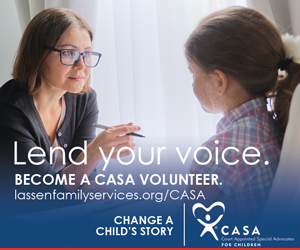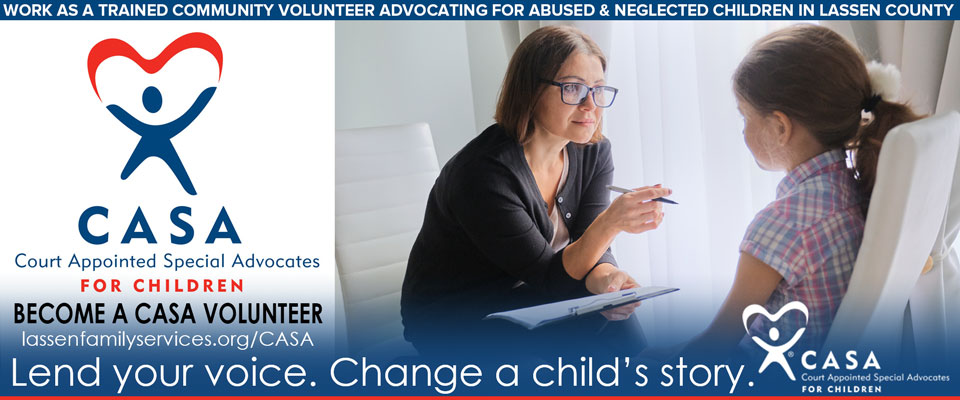
How masks help stop the spread
According to information from the CDPH, Coronavirus spreads when an infected person coughs, sneezes, sings, talks or breathes within 6 feet of others. You may have the virus and spread it even if you feel well.
To prevent infection, you must cover your nose and mouth when outside your home. Wearing a mask is now required statewide.
A simple cloth mask or face covering that covers the nose and mouth can slow the spread of COVID-19 by limiting the release of virus into the air.
The mask can be secured to the head with ties or straps or simply wrapped around the lower face. It can be made of a variety of materials, such as cotton, silk, or linen. A face covering may be factory-made or sewn by hand, or can be improvised from household items such as scarfs, T-shirts, sweatshirts, or towels.
Masks create a barrier that helps prevent respiratory droplets from traveling into the air and onto other people when the wearer coughs, sneezes, talks, or raises their voice. COVID-19 spreads mainly among people who are in close contact with one another (within about 6 feet). Using a mask is important in settings where people are close to each other or where it’s difficult to keep physical distance from others.
Multi-layer cloth masks can both block up to 50-70% of fine droplets and particles, and limit the forward spread of those that are not captured. Their primary role is to reduce the release of infectious particles into the air when someone coughs, sneezes, sings, talks, or breathes. Cloth masks can also reduce your exposure to infectious droplets through filtration.
The state health office also notes that mask wearing reinforces physical distancing and shows you care about the health of others.
Face coverings are not a substitute for physical distancing, washing hands, and staying home when ill, but complements them.
Mask wearing exemptions
Individuals are exempt from wearing masks in the following specific settings:
- People in a car alone or solely with members of their own household.
- People who are working in an office or in a room alone.
- People who are actively eating or drinking. They should maintain a distance of at least six feet from those not in their household.
- People who are outdoors and maintaining at least 6 feet of social distance from others not in their household. They must have a face covering with them at all times and must put it on if they are within 6 feet of others who are not in their household.
- People who are obtaining a service involving the nose or face for which temporary removal of the face covering is necessary.
- Workers who are required to wear respiratory protection.
- People who are specifically exempted from wearing face coverings by [other CDPH guidance].
Some are exempt from wearing face coverings at all times:
- Children younger than two years old. These very young children must not wear a face covering because of the risk of suffocation.
- People with a medical condition, mental health condition, or disability that prevents wearing a face covering. This includes those with rare medical conditions for whom wearing a face covering could obstruct breathing or who are unconscious, incapacitated, or otherwise unable to remove a face covering without assistance.
- People who are hearing impaired, or communicating with a person who is hearing impaired. In these cases, the ability to see the mouth is essential for communication.
- People for whom wearing a face covering would create a risk to the person related to their work, as determined by local, state, or federal regulators or workplace safety guidelines.
Read the official mask guidance from the California Department of Public Health.
How to wear a mask
Don’t wear your mask under your nose or just on your chin. A mask is only effective if it covers both ways you breathe.
Click here to watch the video at YouTube.
Wear a mask correctly and consistently for the best protection.
- Choose a mask that covers your nose and mouth, goes under your chin, and fits snugly against the sides of your face
- Wash your hands before putting on a mask
- Do not touch the mask when wearing it
The CDC has more information about how to wear masks.
What kind of mask should you wear?
Most people should wear a cloth mask or face covering.
Wear a mask with two or more layers of washable, breathable fabric. Do not wear masks intended for healthcare workers, like an N95 respirator.
CDC does not recommend the use of face shields. They’re still evaluating them and their effectiveness is unknown. They primarily provide eye protection for the person wearing it. It is unknown what level of protection a face shield provides to people nearby.
CDC has detailed recommendations for situations where face shields are the only option.
The guidance reminds Californians that the best defense against COVID-19 continues to be:
- Maintain six feet of physical distance from others
- Wash hands frequently
- Avoid touching eyes, nose and mouth with unwashed hands
- Avoid being around people with COVID-19 symptoms





